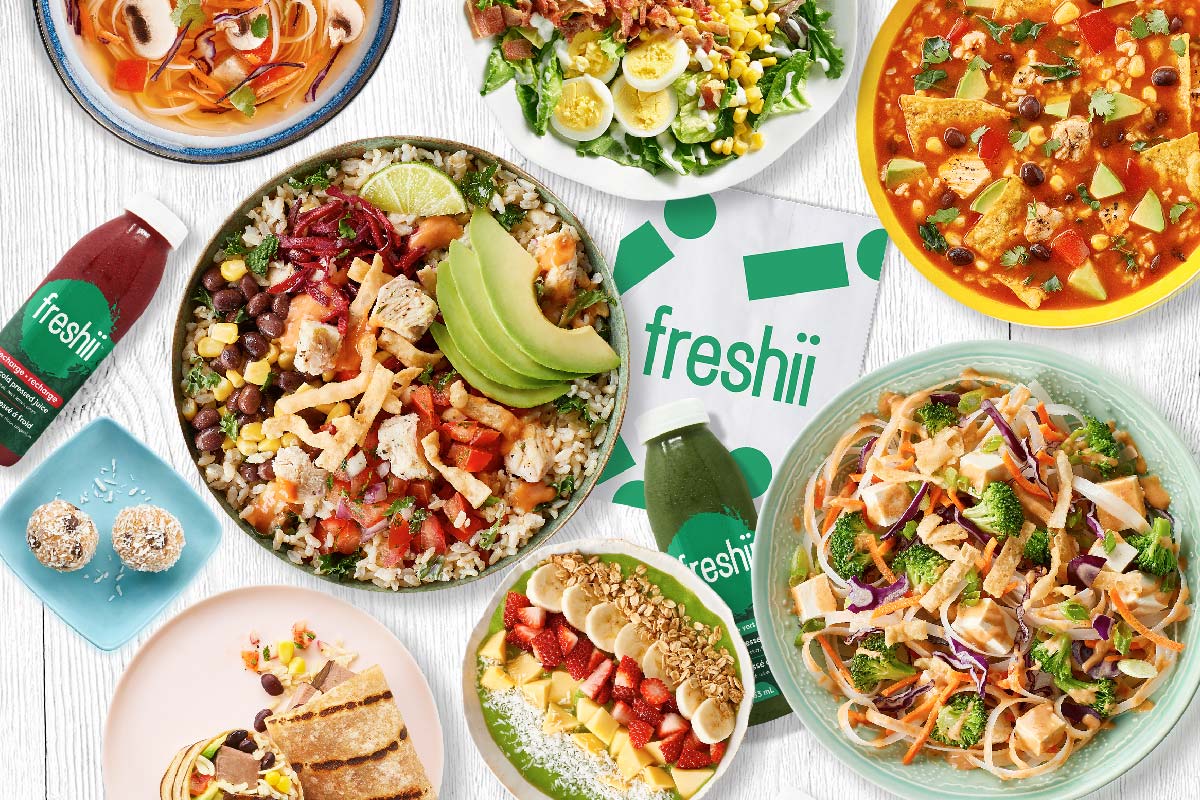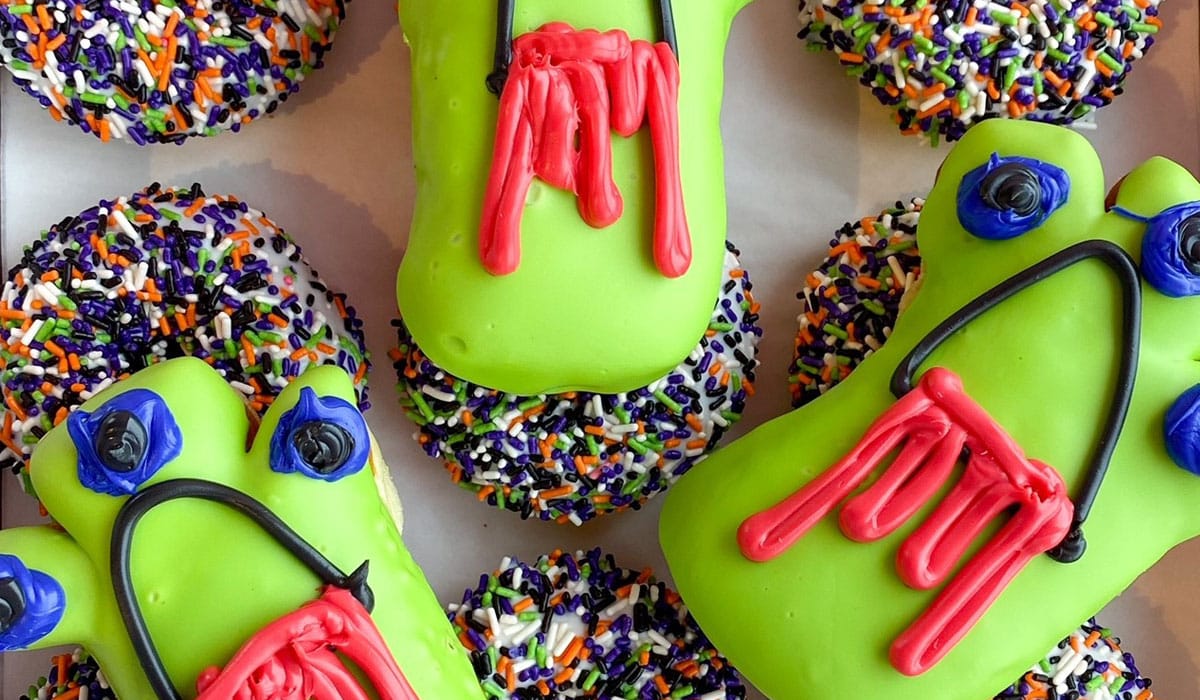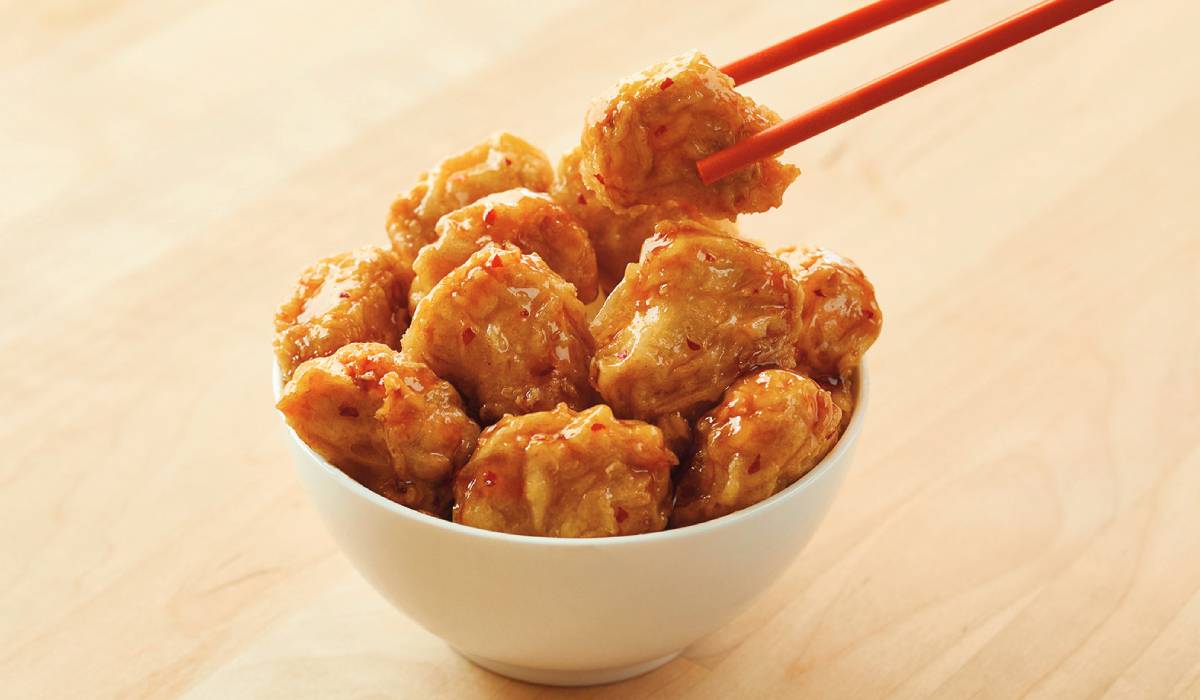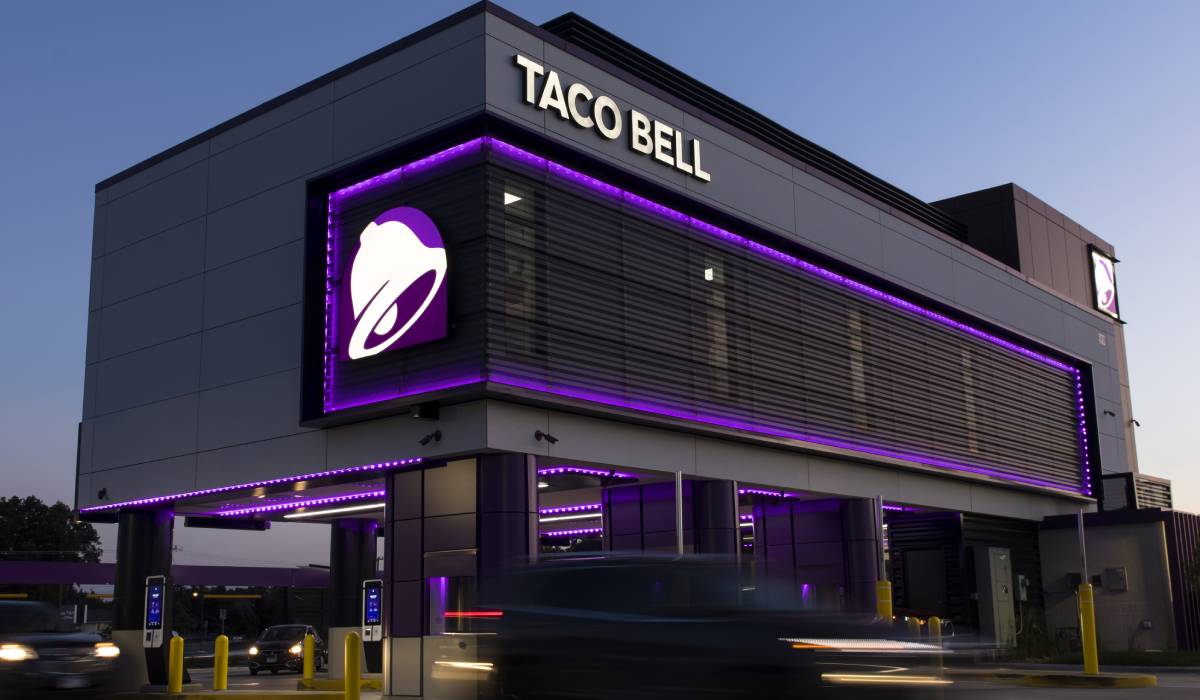On a spring morning in 2020, Lee Engler sat down for breakfast. The sting of the pandemic’s early rush had turned operators into survival gurus. But now, the future was back on the drawing board.
Across the table from Engler, co-founder and CEO of Border Foods, a family-owned franchisee of Taco Bell with north of 230 locations, was Mike Strommen, a friend of Engler’s brother and co-founder, Jeff, who ran a company specializing in consumer retail engagement. Strommen had no history in fast food or sense of its conventional boxes. Yet the problem Engler presented wasn’t a foreign one: the channels of access, in terms of ordering, had become plentiful. However, it boiled down to an age-old friction point—pickup.
About a month later, Engler had in front of him a rendering of an elevated building with drive-thru lanes underneath it. It was initially called “High Top” and resembled a cross between a bank, toll booth, and, according to some, Taco Bell from the 1993 Sci-Fi Movie, “Demolition Man,” where the chain became the “only restaurant to survive the franchise wars,” complete with parking valets and a live pianist.
Regardless of how it’s labeled, though, the restaurant, which would eventually be dubbed “Defy” by Taco Bell corporate, represented the “holy grail of technology in a drive-thru,” brand president and global COO Mike Grams says. And it was, without much dispute, the most vivid manifestation of the restaurant of the future since COVID-19 reset the status quo.
“You have to admit, it’s a wow moment,” Engler says. “It really puts you back on your heels and makes you say, these guys have rethought the industry in terms of how people not only access the brand, but experience the brand.”
The makings of a revolution
Strommen is the co-founder of Vertical Works and CEO of PD Instore, a design, production, and installation company that’s worked with retail giants like Apple, Indian Motorcycle, Samsung, and Sony on everything from custom fit displays to brand revivals. The fact the company hadn’t approached a quick-service project before allowed it to take a whitepaper dive into Taco Bell’s Defy, Engler says. “It was interesting,” he says, “because it really took someone outside thinking rather than inside thinking to come up with this idea.”
The 3,000-square-foot, two-story building circulated social media like wildfire when it opened in June in Brooklyn Park, Minnesota. The modernist, neon-lit (in purple, naturally) restaurant claims it can reduce drive-thru service time to two minutes or less. And it would already be there, Engler says, if customers didn’t stop so often to take pictures.
It’s a four-lane building with three dedicated specifically for mobile orders and third-party delivery pickup. The fourth boasts a speaker box and menuboard.
During the process, two-way audio and video technology enables customers to interact with employees, who are housed on the second story. For each of the three mobile order drive-thru lanes, there’s a digital check-in kiosk where guests/delivery drivers scan a QR code so Taco Bell can identify the order and prepare it for pickup. Once made, an employee places the meal in a proprietary vertical lift system that transports it down to diners.
READ MORE: Check out QSR’s 2022 Drive-Thru Report
Additionally, customers can park, walk inside, and grab mobile orders off a pickup shelf, if they choose, or order at the counter. There are digital kiosks inside, bringing the options to grab orders to nearly a half-dozen ways.
Going back, Engler says the pandemic served more to uncover a growing reality than invent it. Pressure on the drive-thru arrived like an anvil. Consumers suddenly had more ways to access Taco Bell than ever, whether through third-party, traditional channels, web ordering, etc. “What it came to was there was always this single pain point of getting the food,” he says. “Ordering was relatively easy and there are many different channels to do that. But it funnels down to the one point of contact, and that’s really the drive-thru window.”
The Defy concept was developed in partnership with Minneapolis-based Vertical Works Inc, a design company powered by WORKSHOP and the aforementioned PD Instore.
The project came together quickly. It went from a clean sheet of paper and design concept in July 2020 to opening as a fully operational business two years later in June.
Of course, myriad events unfurled between those points. Engler first asked Strommen if he was sure they could build the proprietary lift. “He said, ‘don’t worry about,’” Engler recalls.
And then, Engler brought the idea to Taco Bell.



Engler and Border Foods have been Taco Bell franchisees for 36 years. They dabbled in other brands but always returned to Yum!’s taco giant. Since 2013, the company hasn’t strayed. It will close out the year with about 240 locations, going along at a pace of roughly 10 new incremental builds a year and 20–25 remodels per calendar. Border Foods has no outside money or equity.
Engler, who is 65, told Grams and Taco Bell CEO Mark King Border Foods would build Defy on its own nickel. Taco Bell was tasked with making the tech work and Strommen struck a deal with the chain on the lifts.
Speaking of, the lifts were A1 on the task chart. They ran outside in the winter. Through rain. Everything a surly Midwestern season could throw at it. Engler estimates the lifts spun 500,000 revolutions before getting green-lighted. Parallel, the parties met with Taco Bell for almost a year and a half, monthly, if not bi-weekly at times, for conference calls to work through the tech platforms and stack. “It was a perfect storm with the entrepreneurial spirit of the franchisee, the entrepreneurial spirit of a large corporation like Taco Bell, and, clearly, the outside thinking of what Mike and Josh [Hanson, co-founder of Vertical Works and CEO of WORKSHOP], brought to this whole idea,” Engler says. “And it came across through a friendship.”
Engler says he’s been asked why Defy wasn’t conceptualized before by other brands. His answer: It was hiding in plain sight. “But part of the problem is that you only know what you know,” Engler says. “And these guys, they didn’t know what rules they could or could not break.”
A view into the (not-so-distant) future
Grams says COVID forced all brands to ask themselves where the consumer was going. Everyone started to experience the emergence of digital and delivery. The notion digital could mix a large percentage of transactions was no longer a white whale for restaurants.
At Taco Bell, however, drive-thru was the furthest thing from a pandemic pivot. Before Glen Bell created the brand, he started Bell’s Drive-In and Taco Tia in the San Bernardino, California, area. “We believe we excel at drive-thru and do a really good job,” Grams says. “The challenge for us is how are you going to disrupt yourself, take digital business, and convert it into a drive-thru when the drive-thru is already a pretty good experience that’s painless to the consumer.”
As you might imagine, Grams, who has been with the brand for three decades, sees a lot of prototypes show up on his desk. Taco Bell’s “Go Mobile” was unveiled in August 2020 as a smaller (1,325 square feet versus the typical 2,500) model with a dual drive-thru, smart kitchen technology, “bellhop” in-line order takers, curbside, and, overall, a synchronized digital experience centered around streamlining points. Defy fits into that envisioned universe, but amplified.
What’s also unique about Defy, especially in a COVID era where “restaurant of the future” prototypes raced across the table like ants, is that the finished product actually looks like the rendering. Even better, Grams says. “When you go there and see the lanes full of cars, everybody with their cameras out taking pictures of the experience, you really get that you might be onto something here,” he says. “There’s a lot to learn for us to carry forward.”
Barring a pandemic, Grams says, he would have greeted the idea with trepidation. “I would have said, ‘I’ve seen these pictures before.’ Somewhere in the world, in Australia, they’re going to try to do one,” he says.
Yet this was a different arena. With fast food and drive-thru, brands are searching for outlets to incorporate digital into the business. And to do so beyond just ordering; it’s as much a battleground of integration as one to provide convenience.
Defy is, at its core, contactless drive-thru at its apex. The Washington Post described it as the “MP3 that out-convenienced the CD, which had out-convenienced the cassette.”



“It’s one of those experiences you go through and the first words that roll out of your mouth is, ‘this is really cool, and very easy,’” Border Foods CEO Lee Engler says.
With the three digital lanes, guests pull up to an arrival monitor (think of a kiosk in a stanchion), with a contemporary look. The monitor scans the QR code generated after a customer’s order and the screen confirms before asking you to drive forward. There’s live, graphic motions that show a car progressing. The guest goes about 10 feet and the lift levels down. It was designed to drop to different heights based on car size. This way, consumers aren’t reaching up or down, or having to open the door or get out and grab their food.
When it stops, the door opens and there’s a light curtain for safety protocols in case somebody has multiple items. It’s activated by a guest reaching in.
What the whole process creates is an experience people watch, but choose how they engage with. If they want assistance—to ask for more sauce, for instance—they can hit a call button. Patrons communicate with employees by voice or video. But, as is far more often the case, they simply roll through the restaurant without speaking to or seeing anybody.
When the bag is in the car, the customer’s name is on it, along with the order, to provide double confirmation.
“It’s one of those experiences you go through and the first words that roll out of your mouth is, ‘this is really cool, and very easy,’” Engler says.
On the backend, Grams adds, the learnings and adaption in the kitchen involve the same technology extrapolated upstairs. The production capacity of Defy is triple what a standard Taco Bell would be. The unit has a quarterback role where an employee navigates and updates communication systems to help staff work through the processes.
“It really allows team members to focus on the quality of the food, accuracy of the order, and delivering it,” Grams says. “The tubes do the hard work of actually getting it to the customer.”
The unicorn nature of the design allowed Taco Bell to create a unique employee experience as well. And amid labor challenges, the store defied standards there, too, Grams says.
“When I showed up at the store, they had over 60 team members hired,” he says. “Smiles, people were excited. They’re in a one-of-a-kind experience and they’re the first. It was a really good balance of culture, technology, and the Taco Bell way coming together.”
Despite what some project on social media, Defy does not, in fact, offer any labor savings, Engler adds. There are four production lines versus the two Taco Bell typically boasts. “It’s giant sized in all aspects,” he says, “including the amount of our crew members it needs to run.”
“It’s actually leveraged for higher sales and the AUV is higher,” Grams says. “I think that’s the growing trend—technology is the enabler, not necessarily there to replace [people].”
In a similar vein to the consumer response, Engler says, Defy provided a powerful jolt from a consumer awareness standpoint. Across Border Foods’ fleet, year-to-date, the company’s speed of service is 3 minutes and 20 seconds. “So we’re already fast,” Engler says. “And you couple that with the amount of remodeling we’re doing and rebuilds and then Defy, from an overall brand perspective, it raised the business and the whole market because of that total experience.”
Again, Engler says, Defy is getting guests through the journey in under two minutes when they follow the path. When Steve Hoffman, writing for The Washington Post, dropped by, it took a minute and 46 seconds from QR scanner to drive off.
Customers keep shooting fodder for social media, though, Engler laughs. “Every millennial in the car is taking a video, and, of course, they’ve got to have their friends in it,” he says.

Only the beginning
Engler visited Defy in July and realized it’s become more than just another build, to put it lightly. The most photographed store in the chain’s 7,021-unit domestic portfolio is in Pacifica, California, a unit that feels like a beach bungalow. Next is the Cantina in Las Vegas where people can get married with sauce packet bouquets.
But the social inquires and postings of Defy, Grams says, has exceeded both. “It’s become a destination,” he says. “When we were out there … there were some stories of people parking their drones, taking pictures of it.”
“It’s like when you see the Empire State Building for the very first time,” Grams adds. “The pictures [online] are great and everybody is excited, but they don’t do it justice.”
While he couldn’t divulge exacts, Grams says the uptick in the sales sustainability has been “pretty incredible.”
“We’re only going to get better at operating it,” he says. “That’s what’s exciting.”
Engler adds the excitement level remains high. As does trial. People want to sample the “tacos from the sky,” as Hoffman put it in his article.
The customer feedback to Defy, from the same third-party metrics Taco Bell generally deploys, has been three times higher than the Minnesota market, “which is already really high results,” Grams says. It’s been seven times higher than the brand overall.
“So when you look at how they perceive cleanliness, hospitality, product, speed, and accuracy, it is seven times higher than the average Taco Bell,” Grams reiterates.
And on the same ratings, which cover “probably about 17” brands benchmarked in Minneapolis, Border Foods is No. 1 in overall execution across all of the bars Grams noted.
The location opened up far stronger than any other Border Foods’ restaurant incrementally built, Engler says. So much so, the company is now in the process of measuring what it thinks it can do with a scrape and rebuild. Only this time, with a hybrid of a small dining room.
“It takes healthy franchisees who are progressive, who think about the future, and are beyond the nuts and bolts of the business and into where the consumer is going,” Taco Bell COO Mike Grams says.
That will allow the company, Engler says, to capture the lunch trade in markets where there’s a solid rate of foot traffic inside restaurants. “We don’t want to alienate those customers and force them to do something that’s out of their character,” he says. “So were adapting the asset to have a dining room that will seat the appropriate amount of people for that daypart, as well as doing three lanes.”
With a dining room factored in, Taco Bell can shed a lane from “Defy 1.”
Engler believes this will be the true measure of the throughput boost Border Foods feels it can achieve through the genesis of Defy’s main characteristics. And the experiment will be aided by the fact the Englers own more than 50 percent of their portfolio and real estate, which opens flexibility.
This next iteration of Defy will look just like the first, in terms of the purple light and elevated design. The exterior will mirror the original, but there will be a dining room on one side with windows.
“What I think you’ll see as a brand as we work with Lee and other franchisees to actually branch out and hybrid some different models of Defy,” Grams adds, “while keeping the base principles alive on it.”
Throughout Taco Bell’s franchise system, there’s been an excitement and eagerness to learn from Defy and, of course, be a part of it. It’s a model that’s learnings are going to shape the future of the drive-thru experience for Taco Bell, Grams says.
Still, the brand will continue to build Go Mobile and other formats. “But the Defy, certainly, will be part of the future,” Grams says. “And elements will start to show up in some of the remodels and retrofits across the system as we sale it out and continue to grow at the pace that we’ve been growing at.”
Where the industry stands
Defy, as much as anything, signals a shift in foodservice tides. If you go back decades, much of the sector, especially quick service, was unchanged since inception. No place was this truer than the drive-thru. It’s why technology was never as prevalent in restaurants as other fields. In the 90s, the point of sale was the revolutionary disruption from the cash register. Then came kitchen display systems. Yet overall, retail has long felt ahead of restaurants.
What’s happened, however, Engler says, is technologies amid COVID triggered broader access to brands. So operators are rethinking the traditional model and how it works. Can you make getting food as frictionless, fast, and intuitive as ordering from Amazon?
“That’s why I believe it took outside thinking to really look at our industry and say hey, this industry needs to evolve in terms of how it does what it does,” Engler says. “So what does that look like? And quite honestly, I think our competitors, including ourselves … it wasn’t in their realm of thinking.”
Defy cracked open an opportunity to elevate the experience and promote and provide what the quick-service consumer really wants, Engler says. Dressed down, it gives them choice.
“I think we’re going to provide full flexibility in that experience for our guests,” Engler says.
Grams adds none of this would have come to light without communication between Taco Bell and franchisees. “You can’t as a brand be the only one who comes up with these ideas to make the brand better,” he says. “It takes healthy franchisees who are progressive, who think about the future, and are beyond the nuts and bolts of the business and into where the consumer is going. They need to push the brand to say, hey, we’ve got to go.”






